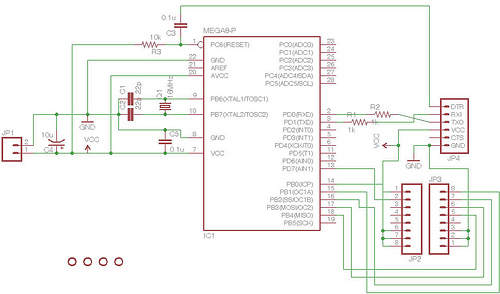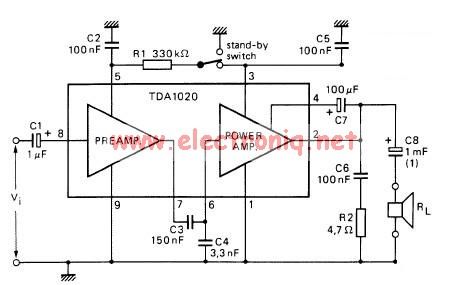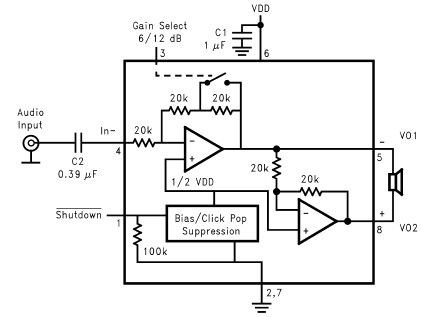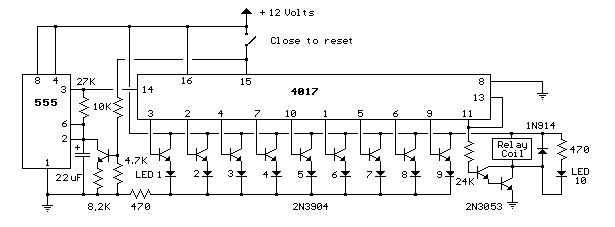
DMAl2 Main schematic circuit diagram

The figure illustrates a simplified schematic diagram of the main circuit DMA12. It primarily consists of the input circuit, an electromagnetic interference (EMI) filter circuit, an impulse current limit circuit, an input rectifier filter circuit, a boost/power factor correction circuit, an absorption circuit, and a half-bridge power translation circuit, along with the output rectifier filter circuit. In comparison to DMA10, DMA12 employs a single-phase input, utilizes a boost/power factor correction method, incorporates a lossless buffer absorption circuit, while the half-bridge DC/DC power conversion and output rectification filter section remains consistent with DMA10.
The DMA12 circuit is designed to enhance power efficiency and minimize electromagnetic interference, making it suitable for various applications requiring stable power supply and high performance. The input circuit is responsible for receiving the AC voltage, which is then processed by the EMI filter to suppress high-frequency noise that could affect the performance of downstream components. The impulse current limit circuit protects the system from sudden surges in current, ensuring reliable operation.
The input rectifier filter circuit converts the AC input into a DC voltage, which is essential for the subsequent boost/power factor correction circuit. This circuit steps up the voltage while improving the power factor, allowing for better utilization of the input power and reducing losses. The absorption circuit is designed to manage voltage spikes, providing a lossless method to absorb excess energy, thus enhancing the overall efficiency of the circuit.
The half-bridge power translation circuit is a key component that facilitates the DC/DC conversion process. It uses two switches to alternate the input voltage, effectively transforming it into a higher voltage output. The output rectifier filter circuit then smooths the DC output, ensuring a stable voltage is provided to the load.
Overall, the DMA12 circuit reflects advancements in power electronics, particularly in the areas of efficiency and noise reduction, while maintaining compatibility with its predecessor, DMA10. The design choices made in DMA12 contribute to its robustness and reliability in demanding electronic applications.The figure shows a simplified schematic diagram of main circuit DMA12. It is mainly composed of input circuit and electromagnetic interference (EMI) filter circuit, impulse current limit circuit, the input rectifier filter circuit, the boost / power factor correction circuit and the absorption circuit, half-bridge power translation circuit, the ou tput rectifier filter circuit. Compared with the DMA10, DMA12 uses single-phase input, boost/power factor correction method and lossless to absorb the buffer circuit, and the half-bridge DC / DC power conversion and output rectification filter part is the same with the DMA10. 🔗 External reference
The DMA12 circuit is designed to enhance power efficiency and minimize electromagnetic interference, making it suitable for various applications requiring stable power supply and high performance. The input circuit is responsible for receiving the AC voltage, which is then processed by the EMI filter to suppress high-frequency noise that could affect the performance of downstream components. The impulse current limit circuit protects the system from sudden surges in current, ensuring reliable operation.
The input rectifier filter circuit converts the AC input into a DC voltage, which is essential for the subsequent boost/power factor correction circuit. This circuit steps up the voltage while improving the power factor, allowing for better utilization of the input power and reducing losses. The absorption circuit is designed to manage voltage spikes, providing a lossless method to absorb excess energy, thus enhancing the overall efficiency of the circuit.
The half-bridge power translation circuit is a key component that facilitates the DC/DC conversion process. It uses two switches to alternate the input voltage, effectively transforming it into a higher voltage output. The output rectifier filter circuit then smooths the DC output, ensuring a stable voltage is provided to the load.
Overall, the DMA12 circuit reflects advancements in power electronics, particularly in the areas of efficiency and noise reduction, while maintaining compatibility with its predecessor, DMA10. The design choices made in DMA12 contribute to its robustness and reliability in demanding electronic applications.The figure shows a simplified schematic diagram of main circuit DMA12. It is mainly composed of input circuit and electromagnetic interference (EMI) filter circuit, impulse current limit circuit, the input rectifier filter circuit, the boost / power factor correction circuit and the absorption circuit, half-bridge power translation circuit, the ou tput rectifier filter circuit. Compared with the DMA10, DMA12 uses single-phase input, boost/power factor correction method and lossless to absorb the buffer circuit, and the half-bridge DC / DC power conversion and output rectification filter part is the same with the DMA10. 🔗 External reference





